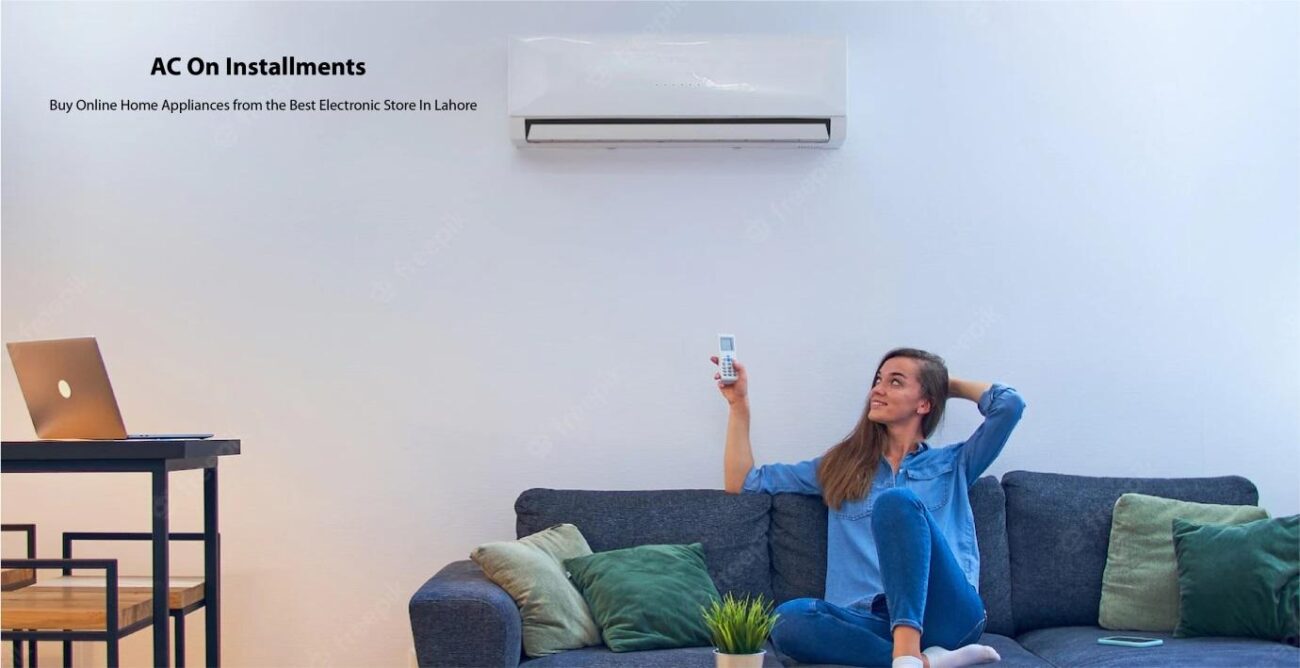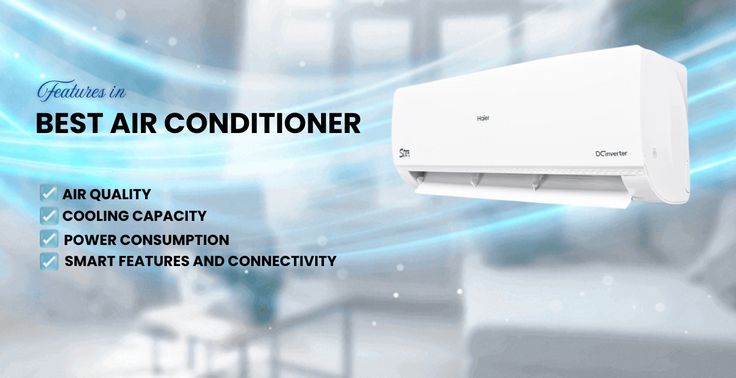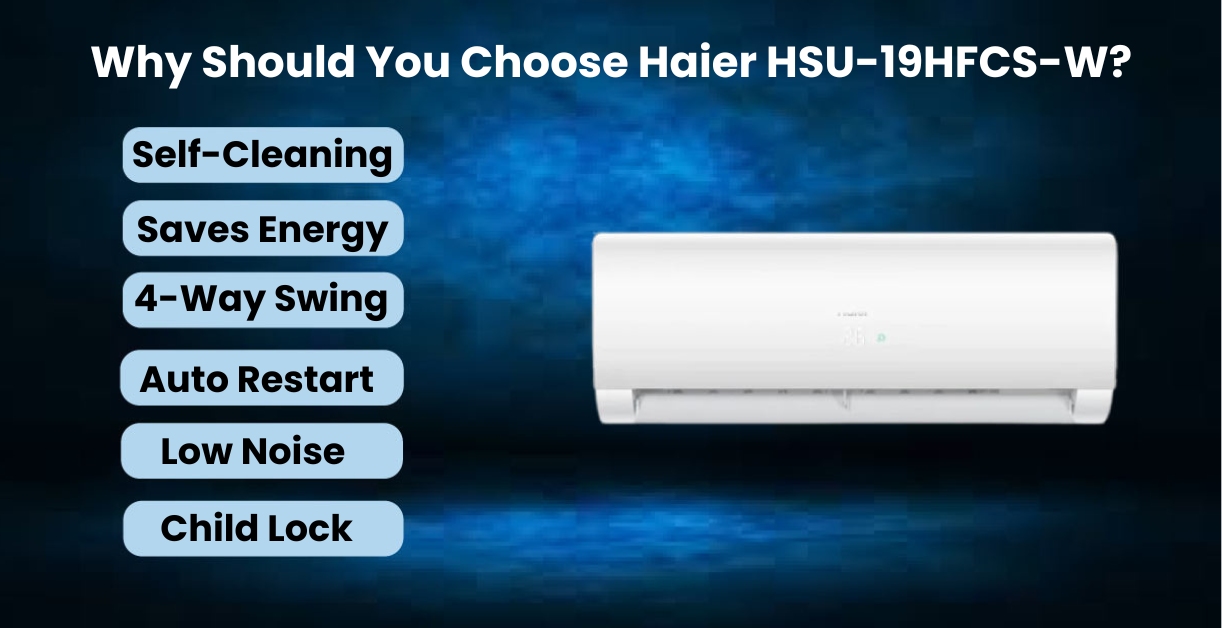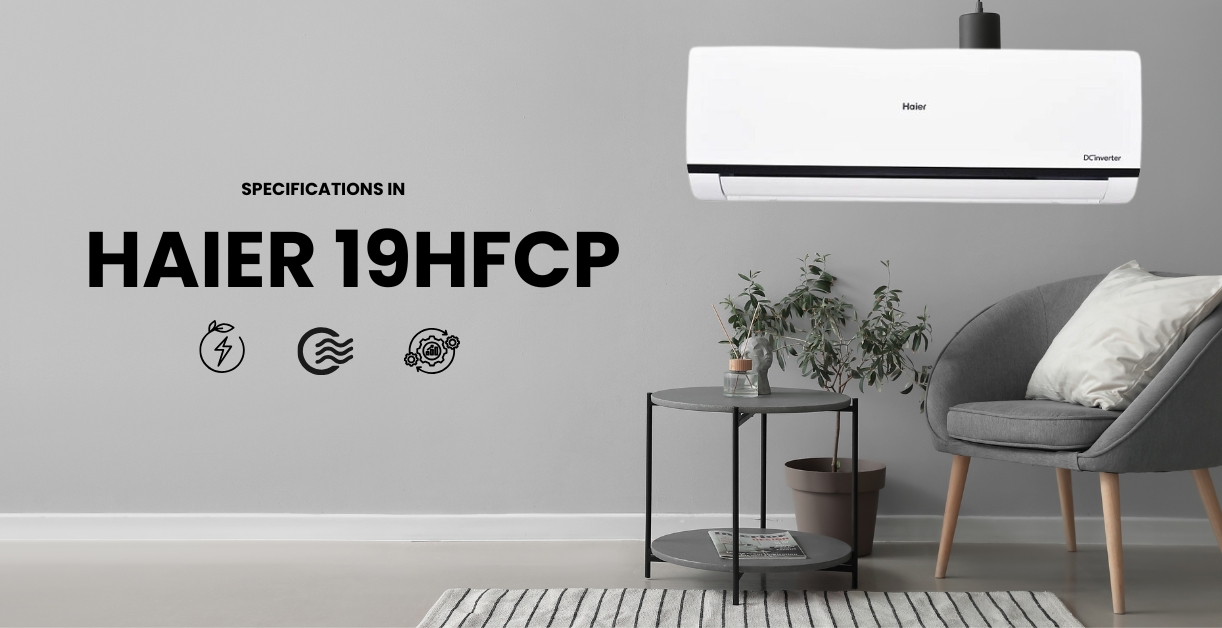Air conditioners are devices that regulate and modify the temperature, humidity, and overall air quality in a confined space, such as a room or building, to create a comfortable and controlled environment. They achieve this by cooling and dehumidifying the air, enhancing comfort and indoor living conditions.
The right Air Conditioner for your living space
Once considered a luxury, air conditioning has become necessary for home appliances. Summer without air conditioning is a nightmare. Even if you have an air conditioner in your room, you may still feel like you’re in a sauna. This may be because you must consider the criteria when choosing the right air conditioner for your home. Before selecting an air conditioner, consider the appliance’s type and size, room size, energy consumption, maintenance, and cooling capacity. In this blog, we’ll look at the different types of air conditioners to help you choose the one best suited to your living space.
Types of Air Conditioners
You may be baffled by the fact that all air conditioners work similarly. So why worry about something as trivial as the type of air conditioner? Remember that each air conditioner is designed for a specific living space. These specifications turn an ordinary room into a living area. There are different types of air conditioners. Let’s look at the four most common types to help you find the right appliance.
Central air conditioning
A central air conditioner is a split system that circulates air through supply and exhaust ducts. A central air conditioner collects cool air at a main point and distributes it to several other rooms. The central point, or unit, is located outside the house (usually on the roof), and several rooms are equipped with cooling coils. The fresh air entering the ducts circulates through the rooms and cools them, while the warm air is returned to the central point. The air-conditioning compressor plays a significant role in this process, ensuring your comfort and well-being.
- Advantages of central air conditioning
A central air conditioning system cools all rooms and spaces evenly. This type of air conditioning is ideal for commercial use. Single-point operation allows easy access and independent control of temperature changes throughout the building. As the central air conditioning system cools all the rooms simultaneously, the temperature can be quickly adjusted to the desired level. Another remarkable feature of central air conditioning is where it is installed. When installed outside the building, it provides a calm and peaceful environment.
Window air conditioners
These air conditioners are best suited to small spaces, as they come in different sizes and are generally installed in windows or window-like areas. A single unit controls them. The rear part of the air conditioner hangs outside, and the front part is inside. The front part blows cool air into the room, and the back part blows warm air. Inside the unit are filters that filter the air from outside to inside. These filters are easy to remove and clean. If you’re looking for an air conditioner that cools your home quickly and affordably, a window air conditioner could be the ideal choice.
- Advantages of Window Air Conditioners
The main advantage of window air conditioners is that they are simple to operate. Users can easily install and maintain them themselves. Filters are easy to remove and clean. Freestanding units do not require professional maintenance and are more economical to run. In addition, they can be controlled remotely and have the same features as ductless mini-split air conditioners but at a much lower price.
Portable Air Conditioners
Like window air conditioners, portable air conditioners are located near windows or other vents. They are also one unit and use exhaust ducts. They may have only one vent that pushes warm air out of the room, or they may have a dual vent that draws in air from outside, compresses it, directs it into the room, and then exhausts it through another duct. However, unlike portable air conditioners, they are more suitable for temporary use. They can cool small spaces and can be positioned and located as needed.
- Advantages of Portable Air Conditioners
One of the main advantages of portable air conditioners is their portability. They can be installed anywhere with no installation costs. Moreover, the installation process itself is very simple. When not in use, portable air conditioners can be easily stored away. All these advantages are strong arguments in favour of portable air conditioners.
Split Air Conditioners
Split air conditioners are perfect for small, enclosed spaces. These air conditioners are also known as ductless mini-split air conditioners. As the name suggests, ductless mini-split air conditioners do not use ducts. These systems are divided into two installation units: the outdoor unit and the indoor unit. The outdoor unit is responsible for compressing and condensing the ambient air, releasing heat, and cooling it. The pressurised air is directed to the indoor unit, which blows the air into the room. The indoor unit and the outdoor unit are connected through ducts. The ducts contain refrigerant, which helps circulate the air. The indoor unit is much smaller than the outdoor unit, making it more aesthetically pleasing. Ductless mini-split air conditioners are installed on the walls of multiple rooms and are controlled by a remote control. They are increasingly used in modern homes due to their cost-effectiveness, low maintenance, and ease of use.
- Advantages of Ductless Mini Split Air Conditioners
Requires minimal maintenance and rarely has leakage problems. They are also favoured for their individuality, making them cost-effective. Lower budget, as only a small amount of energy is required to cool the room. The most important advantage of installing a ductless mini-split air conditioning system is the ability to change the temperature of each room as needed. In addition, ductless mini-split air conditioners are famous for their ease of use. It can be controlled with a remote control or a mobile phone. In addition, the latest version (DC inverter) can also increase the temperature. Thus, ductless mini split air conditioners are up-to-date all year round. Easy installation also makes them a practical option. They can be installed anywhere, regardless of the location of the ducts.
Technology advancement in Air conditioners:
DC Inverter air conditioners are the latest technology to conquer the world. Inverter air conditioners are preferred by many because of their cost-effectiveness and efficient operation compared to non-inverter air conditioners. The compressor of an inverter air conditioner does not work with a start and stop mechanism. Instead, it works continuously and without interruption. For example, suppose you have set a temperature of 16 degrees. In that case, the compressor slows down as soon as the air conditioner reaches the set temperature and runs slowly while trying to maintain the room temperature. When the temperature rises, the compressor starts up again to maintain the temperature as indicated. As the appliance does not need to start and stop repeatedly, it will not corrode, rust, or wear out. This ensures a long service life and is economical in terms of electricity bills, as the compressor consumes three times more energy than usual when restarted. So choose the best DC Inverter air conditioner with modern performance for your room and equip your home with the best air conditioning tip in town.
Air conditioner size
The size of the air conditioner corresponds to its cooling capacity. In the Pakistan, the power of an air conditioner is calculated as the amount of heat it can remove from a room in an hour. Choosing the right size air conditioner for the room is very important because the wrong choice can impair the air conditioner’s performance.
How do I calculate the capacity of an air conditioner for a given room?
The air conditioner’s size, cooling, or heating capacity is calculated in British thermal units. According to current standards, 1 tons equals 12,000 BTUs, 1.5 tons to 18,000 BTUs, and 2 tons to 24,000 BTUs. To calculate the tons of air conditioner required for a given room size, multiply the room’s width by its length, then buy the air conditioner you need. Other factors can influence air conditioner performance. For example, the relationship between heat, humidity, and the number of people living in the room or other appliances.
Where you can get your required products?
To find energy-efficient, cost-effective, environmentally friendly, and state-of-the-art DC inverter air conditioners, visit Lahore Centre. Our state-of-the-art air conditioners with next-generation technology are unique.







